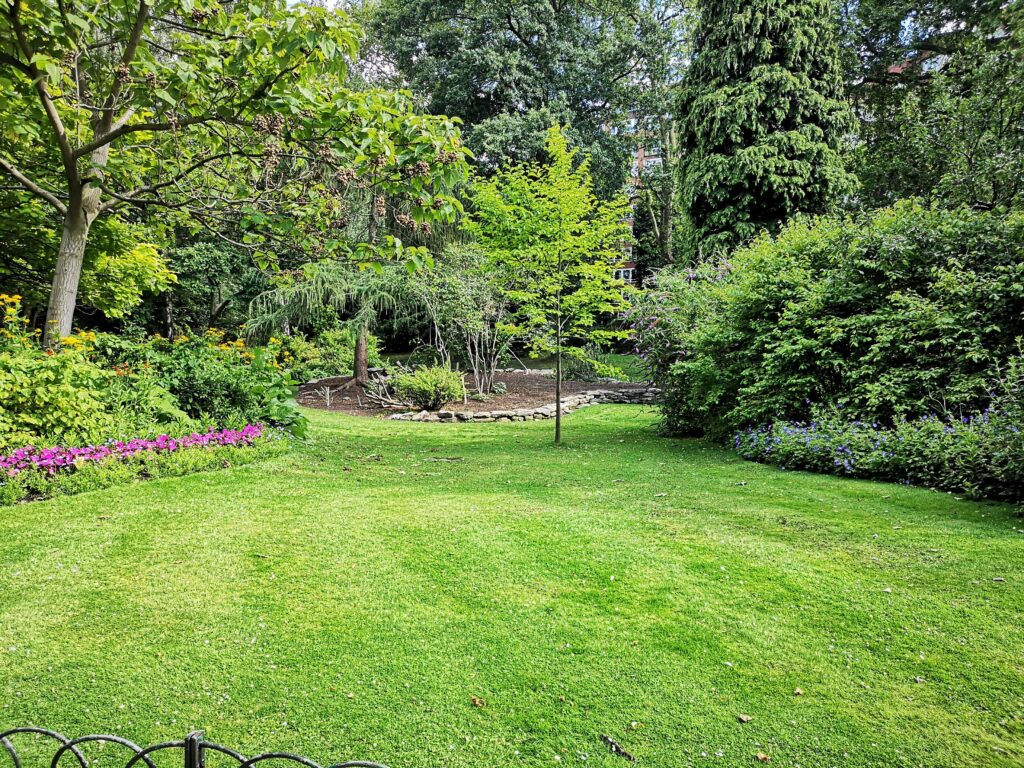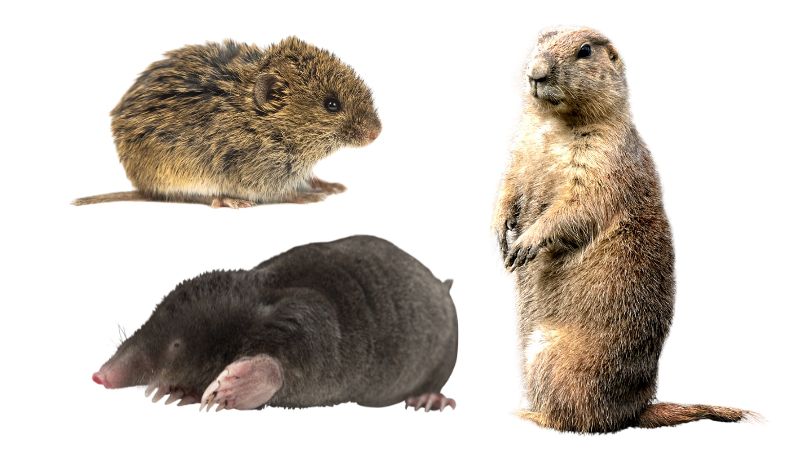
All About Voles, Moles, Gophers Control In Edmonton
Below is our table of content on Voles, Moles, Gophers, what they do, what to do with them, and the how and why Major Pest Control does Voles, Moles, Gophers removal in Edmonton right.
Table Of Contents
What Is The Difference?
Voles, moles, gophers are commonly mistaken for one another. Read more to learn about how to distinguish among these rodents.
Voles have small, mouse-like bodies that are 10-15 cm in length plus a short tail. Voles are commonly known as meadow mice. The only visible difference between a vole and a field mouse is that it will have a smaller tail than a field mouse. Keep learning about voles >>
Moles are a similar size but have dark colored short fur, inconspicuous eyes and ears, and distinctive flat, wide front paws. A mole is slightly larger than a vole. It is less common to see a mole above ground. Their small eyes are not able to withstand much sunlight. Keep learning about moles >>
Gophers are the largest among the three at about 15-25cm long with a short tail and large front teeth. They are also known as pocket gophers and are so-called because of their large cheek pouches they use to hold food and materials for creating nests. Keep learning about gophers >>
What are voles? – Everything you need to know
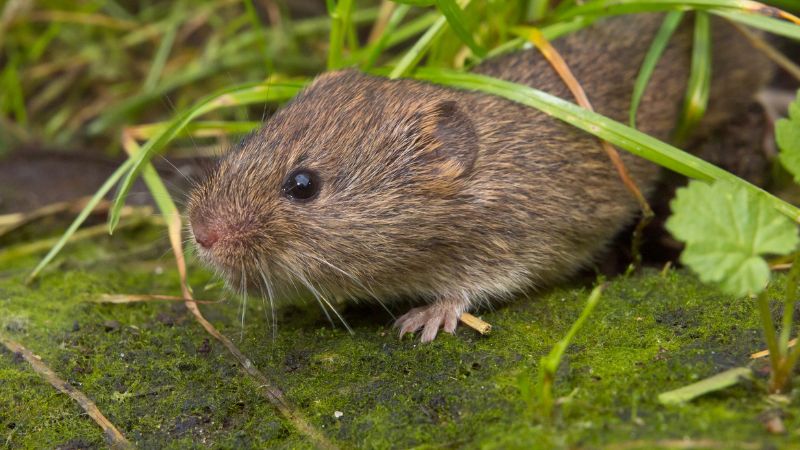
Voles are small rodents with round bellies, tiny ears, beady eyes, and brownish-grey fur, and they are notorious troublemakers in Alberta, especially during the winter months. The snow cover conceals their activities allowing the voles to gnaw the roots and stems of trees and shrubs. In addition to providing cover, the snow also provides moisture. The combination allows them to move around undetected. The moisture allows the ground to soften enhancing the creation of vole pathways. If melting snow reveals current vole activity on your property, call the professional exterminators at Major Pest Control. They will conduct a thorough inspection to determine the extent of the problem and will then recommend a treatment plan for your unique situation.
Keep in mind that voles reproduce rapidly and can produce 5-10 litters each year with an average of five pups per litter. As such, vole populations can quickly spiral out of control.
There are 12 species of voles in Alberta and the most common is the meadow vole (commonly called field mouse). If you’re looking for professional pest control services, call on the team at Major Pest Control. Our highly experienced technicians will inspect your property to assess the extent of the problem and then implement an individualized treatment plan to quickly and effectively eliminate your rodent problem.
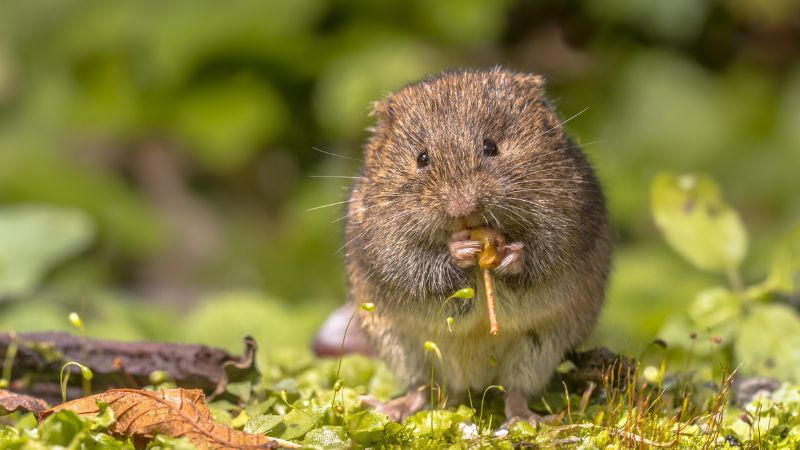
Common FAQs about voles in Edmonton
-
How do I know if I have voles in my yard?
A number of telltale signs of voles in your yard include the following:
– 1-2” wide paths in the surface of the turf
– Holes in the lawn and around the base of trees are created when moles burrow; vole burrows do not have soil mounding as seen with molehills
– Areas in the yard where the grass is suddenly very short
– Observing gnaw marks on the stems and trunks of woody plants and young trees
– Stems where gnawing have produced a pointed tip
– Plants that are dead and have no remaining root structure when lifted -
Are voles dangerous?
While voles do not pose a physical threat to humans, they can transmit diseases. When voles eliminate on your property, the urine and feces deposited can introduce parasites and diseases like salmonellosis, leptospirosis, and Machupo virus. These diseases can be transmitted to humans and pets.
-
Can voles cause damage to my lawn?
In short, yes, voles can be very destructive to a yard. Their preferred food are the vulnerable stems of young trees and woody ornamental plants, which causes severe damage and dieback. Additionally voles cause a large amount of turf damage, which most homeowners discover in the spring.
During winter, snow on the ground protects voles from predators and provides shelter for feeding. When the snow melts in the spring, homeowners often find the telltale “runways” of a vole infestation, which look like raised tunnels in the grass surface and are the result of voles feeding within the turf canopy. Also they leave layers of droppings along the runways and will wear down the grass surface with their activities.
-
Which voles can I find in Edmonton?
The most common vole species in Alberta include Northern Red-backed Vole, Southern Red-backed Vole, Eastern Heather Vole, Meadow Vole (commonly called Field Mice), Tundra or Root Vole, Long-tailed Vole, Taiga Vole, Singing Vole.
-
What are the problems with voles?
Voles create small holes about 1 inch across to gain access to tubers and bulbs. Voles sometimes use mole tunnels, which wrongly incriminates moles for eating roots rather than the white-grubs they actually eat. Vole damage may also be evident on trees and shrubs where voles have gnawed through the bark near the ground.
-
What time of day are voles most active?
Voles are active day and night with peak activity occurring at dawn and dusk. They do not hibernate and are active year-round. Their home range is usually ¼ acre or less, but the range extent varies with season, population density, habitat, and food supply.
-
How do I stop voles from tunneling?
One method to try is creating a cleared strip around your vegetable garden to discourage movement. You can also protect some of your plants and trees using hardware cloth or by creating makeshift collars from materials such as open-ended plastic jugs or milk cartons, which are then buried an inch or two into the ground to keep them from tunneling in.
-
What attracts voles?
Voles prefer to inhabit areas with ample vegetation for food and cover. Rather than providing their preferred habitat in your yard, take measures to remove these items to encourage them to leave. Mow your lawn and pull weeds regularly. Remove ground cover like brush and low-lying bushes and shrubs.
What are gophers? – Everything you need to know
Pocket gophers, commonly referred to simply as gophers, are burrowing rodents of the family Geomyidae. They are commonly known for their extensive tunneling activities and their ability to destroy farms and gardens.
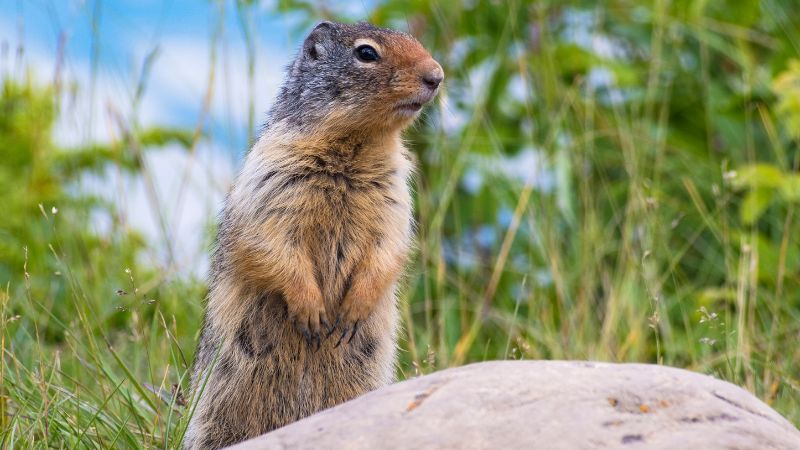
The roughly 41 species are all endemic to North and Central America, with 2 species found in Canada. The northern pocket gopher lives in southern Manitoba, Saskatchewan and Alberta, and in south-central BC while the larger plains pocket gopher barely extends into Canada via the Red River valley, Manitoba.
Pocket gophers have round bodies, small eyes, short ears and tail, and large, curved claws on the forefeet for digging. They have short fur which is grey to brown and can lie in any direction. They are named pocket gophers because they carry food or nesting materials in fur-lined, external cheek pouches (pockets) which they empty with their forefeet. The mouth closes behind their gnawing teeth which never stop growing, enabling these rodents to harvest underground vegetation and to excavate networks of tunnels in prairies and mountain meadows without ingesting the soil.
Pocket gophers create fan-shaped mounds that are burrow exits, which are usually closed with round, earthen plugs. Except during the short mating season and when females are raising young, they live solitary lives. Each year 1-2 litters of 2-11 pups are reared in deep tunnels.

Common FAQs about voles in Edmonton
How do I know if I have gophers in my yard?
The most common sign of gopher activity will be the crescent-shaped mounds of dirt. These mounds will often be grouped together and have the dirt collected mostly to one side and will be finer in texture. There will also be a circular plug of dirt in the center as well as signs of predation, like bare patches in the yard or chewed roots, tubers, and plants.
Are gophers dangerous?
While rare, gophers can be extremely aggressive and have been known to carry the rabies virus from host to host. If you come near a female gopher and her litter, you can expect to be chased and even bitten if there is an opportunity to do so.
What is the best way to control pocket gophers in Edmonton?
Pocket gophers can cause damage to your lawn and garden. Homeowners can control them humanely by eliminating their food source, spraying with liquid repellents, scattering repellent granules, using barriers and/or digging trenches lined with wire mesh or hardware cloth.
Additionally trapping is a safe and effective method for controlling pocket gophers. Several types and brands of lethal gopher traps are available. Most common are 2-pronged pincer traps, which the gopher triggers when it pushes against a flat, vertical pan or metal wire.
What time of day are pocket gophers most active?
Pocket gophers are active year round and may burrow at any time of day. However, most gopher activity takes place in the spring when they may construct up to three mounds a day. Additionally, they are most active around dusk and at night.
How many pocket gophers are in a colony?
Pocket gophers generally prefer to live alone except when they are young. However populations can also be as dense as 60 per acre when food is plentiful.
Contact Major Pest Control
Pest Control is something people always dread because they think it costs an arm and a leg when in reality it isn’t bad at all!
Our experts on site will give you a detailed inspection and quote. Usually for Voles, Moles, Gophers removal Edmonton it will cost around $300 – $1,000 depending on the severity and size of the infestation.
Major Pest Control Edmonton is one of the leading pest control & extermination companies in Alberta, providing professional pest solutions 24/7. Our service is fast, safe, effective, affordable and environmentally friendly. We’re a top-rated Edmonton exterminator and offer a 100% money-back guarantee on our pest control services.


